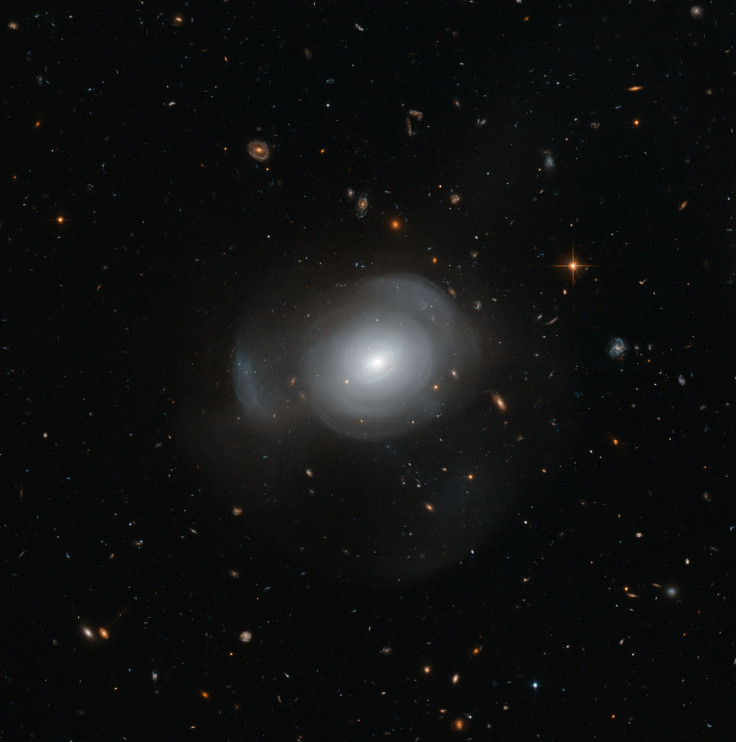Hubble Space Telescope Captures The 'Cosmic Bloom' Of Galaxy PGC 6240
The Hubble Space Telescope has captured the strikingly unusual structure of galaxy PGC 6240. The galaxy looks like a "pale rose in the sky" and based on the Hubble photo, the shape of PGC 6240 seems to be due to a recent galactic merger.

PGC 6240 is classified as an elliptical galaxy and is located 350 million light-years from Earth, in the constellation of Hydrus. Elliptical galaxies are the oldest of the three main types of galaxies, spiral galaxies being the youngest and lenticular galaxies falling between spiral and elliptical galaxies.
The galaxy features stacked shells and many globular clusters, densely packed regions of stars that are pulled together by gravity. Previous research indicates the rare shape, as well as the makeup of the globular clusters, of PGC 6240 are due to a recent galactic merger. Globular clusters, according to NASA and the European Space Agency, are pretty uniform, having formed around the same time. The stars within these clusters are also all around the same age, but that is not the case with the globular clusters around PGC 6240 as there are both young and old stars within the same cluster.
A galactic merger would have altered the structure of PGC 6240 and would have also triggered an increased level of star formation, which would explain the composition of the globular clusters. Another interesting aspect of this Hubble image is the variety of galaxies that can be seen in the background.
© Copyright IBTimes 2024. All rights reserved.






















